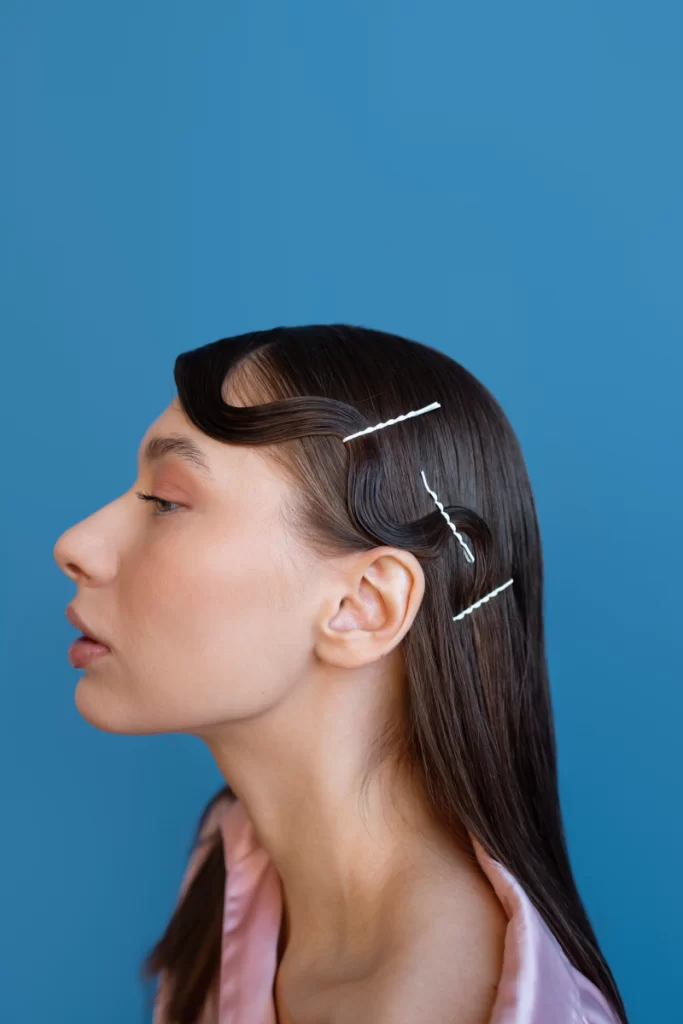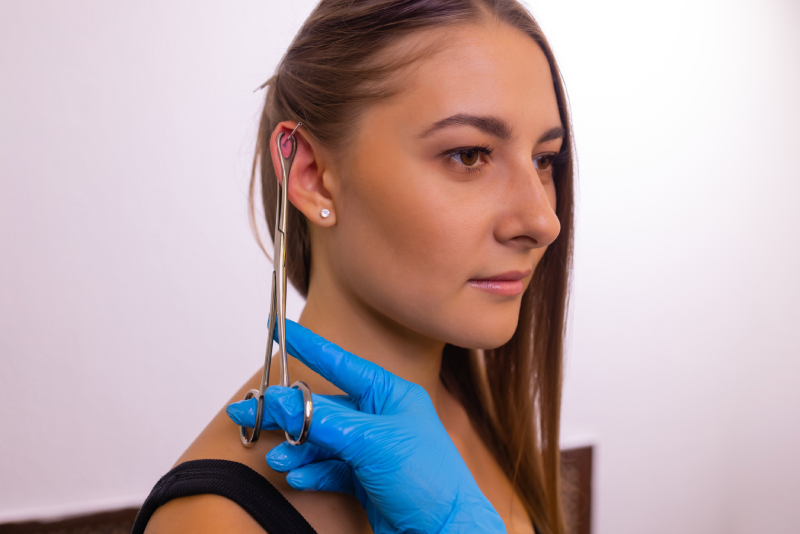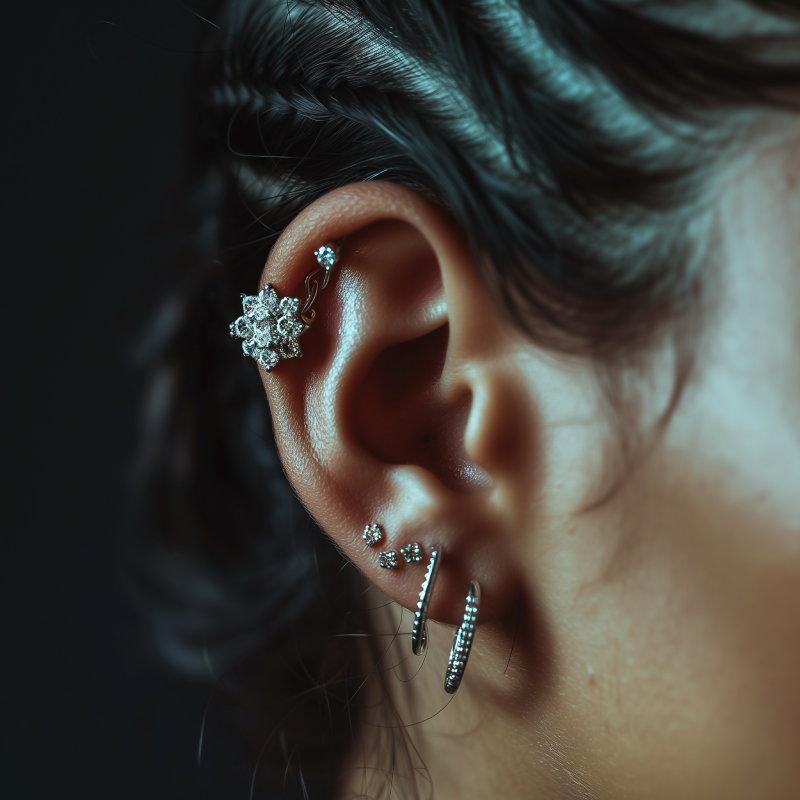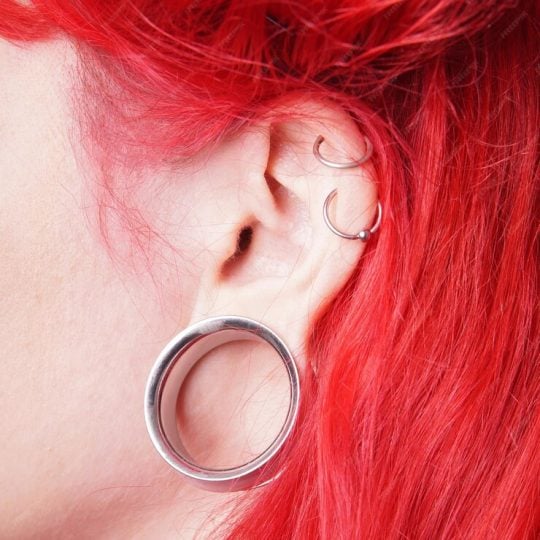Ever fancied a studded ear? Adorning the body with jewelry is an age-old tradition and a timeless way to express personal style. Today, ear piercing presents blank canvas for individuals for self-expression and showcase their unique personality and style. From simple studs to elaborate designs, everybody has their own preference. While some prefer traditional lobe piercing, while other opt for arrays of placements and style. Among different styles, one contemporary cartilage piercing, double helix gained popularity because of the perfect blend of subtlety and statement it offers.
In this comprehensive guide, we’ll explore everything you need to know about double helix piercings. From understanding what they are and how they’re done, to essential aftercare tips and styling ideas, we’ll cover all aspects of this trendy ear modification. So, if you’ve been considering adding some edge to your look or are simply curious about this popular piercing style, read on to know everything about double helix piercings.
What is Double Helix?
A helix piercing is done on the helix region, the outer cartilage rim of the ear. The outer ear anatomy is divided into two parts- lobe and cartilage but in piercing placement the cartilage is further divided into conch, helix, rook, daith, and tragus. Let’s skip the terminology and dive into the fun part.
Unlike a single helix piercing, the double helix features two distinct holes, typically placed close to each other. This dual-piercing arrangement allows for creative combination and dynamic visual impacts. Double helix are generally positioned on the upper portion of the ear’s outer curve, where the cartilage is prominent, but it depends on ear structure and personal preference.
Types of Double Helix

While the basic concept of a double helix piercing remains consistent, there are several variations in placement and style:
- Standard Double Helix: This is the most common type, with two piercings placed vertically along the outer ear rim.
- Forward Double Helix: Two piercings placed on the inner side of the ear’s upper cartilage, right above the tragus.
- Custom Placements: Some individuals opt for unique placements based on their ear shape or personal aesthetic preferences.
Does it hurt?

Pain is a subjective experience, and the level of discomfort during a double helix piercing can vary from person to person. However, it’s generally considered to be moderately painful. The cartilage in this area is thicker and has fewer nerve endings than the fleshy parts of the ear, which can make the piercing process less painful than some might expect.
Most people describe the sensation as a sharp pinch or pressure, rather than intense pain. Pain is typically for a brief period as usually goes away after sometimes. However, there might be some discomfort during the healing process, especially due to infection or injury to the ear.
Things you need to know before getting Double Helix

Before committing to a double helix piercing, consider the following factors:
- Professional Piercer: Always choose a reputable, licensed piercer who follows strict hygiene protocols. Research piercing studios and read reviews from previous clients.
- Jewelry Quality: Opt for high-quality, hypoallergenic materials such as surgical stainless steel, titanium, or 14k gold to minimize the risk of allergic reactions or infections.
- Anatomy Considerations: Not all ears are suitable for double helix piercings. A professional piercer can assess your ear structure to determine the best placement or if the piercing is feasible.
- Lifestyle Factors: Consider how the piercings might impact your daily activities, such as sleeping, wearing headphones, or participating in sports.
- Commitment to Aftercare: Be prepared to dedicate time and effort to proper aftercare, which is crucial for successful healing.
- Cost: Double helix piercings are typically more expensive than single piercings due to the additional jewelry and time required.
- Age Restrictions: In many areas, there are age restrictions for cartilage piercings. Check local regulations if you’re under 18.
- Healing Time: Understand that cartilage piercings take longer to heal than lobe piercings and require patience.
- Potential for Complications: Be aware of possible risks such as infection, rejection, or keloid formation.
- Future Modifications: Consider how these piercings might align with any future ear modifications you’re planning.
Healing time

The healing process for a double helix piercing is generally longer than that of earlobe piercings due to the cartilage’s limited blood supply. On average, it takes about 6 to 12 months for a double helix piercing to heal completely. However, this can vary based on individual factors such as overall health, aftercare practices, and how well the body responds to the piercing.
During the initial healing phase (first 4-6 weeks), you may experience swelling, redness, and some discharge. This is normal and part of the healing process. After this initial period, the piercing enters a longer healing phase where it may appear healed on the outside but is still healing internally.
It’s crucial to maintain proper aftercare throughout the entire healing period, even if the piercing looks and feels healed. Premature discontinuation of aftercare or changing jewelry too soon can lead to complications and prolong the healing process.
Aftercare for Helix Piercing

Proper aftercare is essential for successful healing and preventing infections. Here’s a comprehensive aftercare routine for double helix piercings:
- Cleaning Solution: Use a sterile saline solution or a sea salt solution (1/4 teaspoon of sea salt in 1 cup of warm water) to clean the piercing.
- Let warm water run over the piercing during showers to help remove any buildup.
- Be careful when washing or styling your hair to avoid snagging the jewelry.
- Use a travel pillow or donut pillow to avoid pressure on the piercing while sleeping.
- Keep hairsprays, perfumes, and other cosmetics away from the piercing site.
How to style your Double Helix

Once your double helix piercings are fully healed, you can explore various styling options:
- Matching Studs: Use identical studs in both piercings for a symmetrical look.
- Mixed Metals: Combine different metal colors like gold and silver for contrast.
- Gemstone Variety: Use different colored gemstones to create a unique color combination.
- Size Variation: Pair a larger stud with a smaller one for visual interest.
- Hoops and Studs: Combine a small hoop in one piercing with a stud in the other.
- Chains: Use chain-linked jewelry to connect the two piercings.
- Themed Sets: Choose themed jewelry sets, like celestial designs or minimalist shapes.
- Dangly Pieces: Once fully healed, experiment with small dangly earrings for added movement.
- Cuffs: Incorporate ear cuffs that work with your double helix piercings.
- Seasonal Changes: Switch up your jewelry to match seasons or special occasions.
Remember to always use high-quality jewelry and be gentle when changing pieces to avoid irritation.
Do’s and Don’ts
To ensure the best experience with your double helix piercings, follow these do’s and don’ts:
Do’s:
- Do research and choose a reputable piercer.
- Do follow the aftercare instructions diligently.
- Do be patient during the healing process.
- Do use high-quality, hypoallergenic jewelry.
- Do keep the piercing area clean and dry.
- Do seek professional advice if you notice any signs of infection or unusual healing.
Don’ts:
- Don’t touch the piercing with dirty hands.
- Don’t rotate or play with the jewelry during healing.
- Don’t use alcohol, hydrogen peroxide, or harsh chemicals to clean the piercing.
- Don’t remove the jewelry before the piercing is fully healed.
- Don’t ignore signs of infection or irritation.
Conclusion
In conclusion, a double helix piercing can be a beautiful and expressive form of body art. While it requires careful consideration, proper care, and patience during the healing process, the result can be a unique and stylish addition to your appearance. By following professional advice, maintaining good hygiene, and choosing quality jewelry, you can enjoy your double helix piercings for years to come. Remember that every individual’s experience with piercings can vary, so always listen to your body and consult with professionals when in doubt. With the right approach, your double helix piercings can become a cherished part of your personal style and self-expression.




